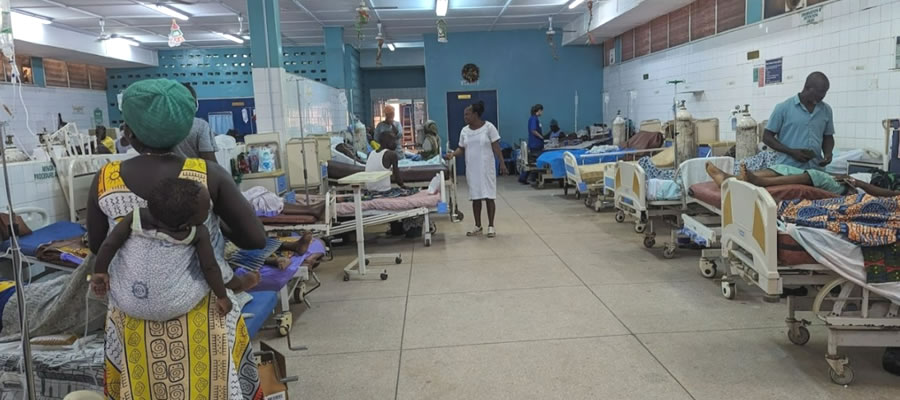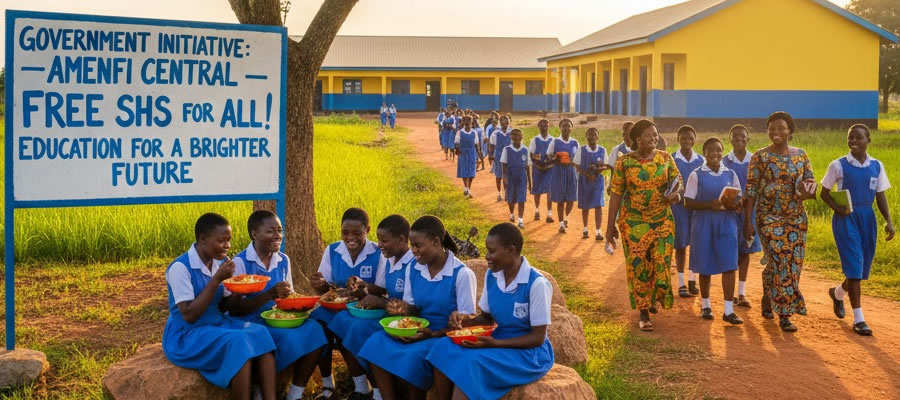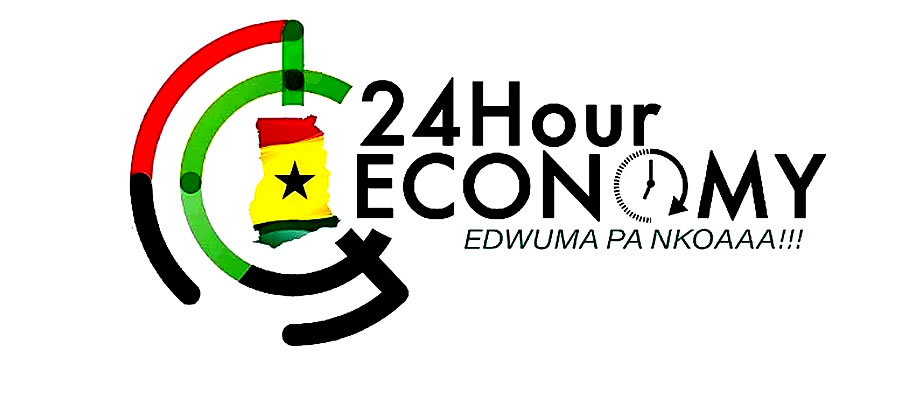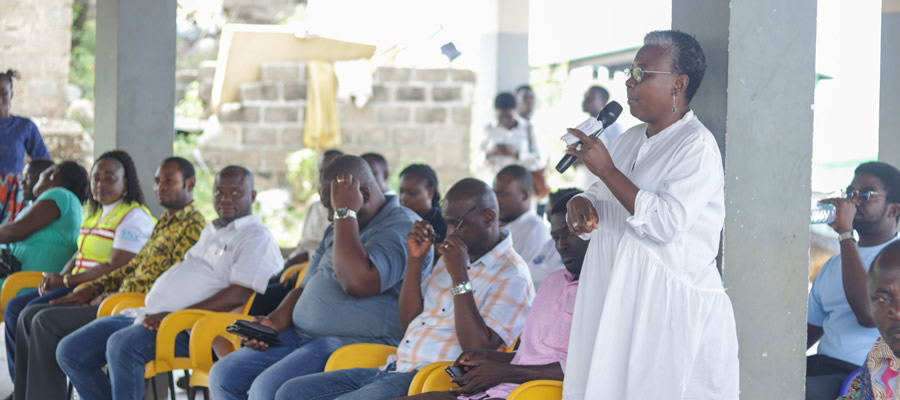
The population of the region as enumerated in the 2010 PHC is 2,376,021; with 1,187,774 males and 1,188,247 females. The population aged less than 15 years constitute 39.6 percent of the total, while those aged 15 - 64 make up 57.0 percent and persons 65 years and older make up the remaining 3.4 percent.
The proportion of the population urban is 42.4 percent. Currently, the regional population density is 99.3 persons per sq km having increased from 80.4 persons per sq km in year 2000. Among the 17 Districts in the Region, the Sekondi-Takoradi Metropolis has the highest share of 23.5 percent of the population, whilst Nzema East Municipal has the lowest share of 2.6 percent.
Population Size and Growth
The results of the 2010 Population and Housing Census (2010 PHC) showed that the number of persons enumerated in the Western Region was 2,376,021. Table 3.1 captures the size, growth and density of the regional population since 1960.
The population of the Western Region almost doubled between the inter censal period, of 1960 (626,155) to 1984 (1,157,807). In a space of forty years (1970-2010), the population of the Region increased by over 300 percent. In spite of this, the percentage change dropped considerably from 66.2 percent in 2000 to 23.5 percent in 2010, while the inter censal growth rate also dropped by 1.2 to 2.0 percent during the same period. In 2000, the regional inter censal growth rate was above the national average (2.7%) but in 2010 it was below national growth rate of 2.5 percent.
The population density of the Region has increased from one census to the next and by nearly fourfold over the 50 year period. The reason for this might be attributed to influx of persons to the growing cocoa areas, ‘galamsay’ operations and the oil and gas industry. The current Regional density of 99.3 persons per sq. km. is below the national population density of 103.4 persons per sq. km. but much more below the Region with the highest population density is Greater Accra (1,235.8 persons per sq.km).
District share of Regional Population
Table 3.2 shows that since 1960, the Region’s share of the national population has been between nine and ten percent with a marginal variation of about 1.2 percent. This is indicative of a relatively stable share of the national population.The population of the Region is unevenly distributed across the Districts as shown in Table 3.2.
Sekondi- Takoradi Metropolis has the highest share (23.5%) while Nzema East Municipal has least (2.6%). Other Districts with a small share of the population are Ellembelle (3.7%), Shama (3.4%), TarkwaNsuaem (3.8%), Amenfi East (3.5%) and SefwiAkontombra (3.5%). The remaining Districts have between 4.4 and 6.8 percent of the total population of the Region.
Rural-Urban Distribution
The distribution of the population by type of locality (rural/urban) is presented in Table 3.3. A locality is described as urban if it has a population of 5,000 or more. The proportion of the population living in urban areas in the Region has been increasing since 1960, except in 1984 when there was a decline. Apart from 1960 when the regional proportion urban was slightly higher than the national average (23.1%) the reverse has been the case since 1970 (GSS, 2013).
Even though over 40 percent of the population of the Region is urban in 2010, only two Districts, Sekondi-Takoradi and Shama have averages higher this figure. The Sekondi-Takoradi Metropolis in which the regional capital is located is almost entirely urban (96.1%) while the percentage of the population urban in 15 percent of the 21 Districts is below the Regional average of 42.4 percent. Most factories are located in the twin-city of Sekondi-Takoradi the industrial and commercial hub of the Region. metropolis. The rest of the Districts (15) are basically rural.
Tarkwa-Nsuaem (30.3%), PresteaHuni Valley (37.1%), SefwiWiawso (35.8%), Jomoro (35.4%) and Bibiani-Anhwiawso-Bekwai (28.5%) are at the threshold of urbanization because of the influx of people into the cocoa, oil and gas industries. Most of the rural Districts. WassaAmenfi East (6.9% urban), SefwiAkontombra (8.8%), Juabeso (11.2% urban), and Bia (20.1% urban) are located in the forest belt where cocoa production is extensive. These Districts are that only less opened up but are also lack infrastructural development and hence fail to attract industries although they have abundant raw materials.
Age and Sex Structure
Age Structure
Trends in age structure of the region (Table 3.4). have not changed significantly over the 50 year period. However, there were notable changes in 2010. For the first time in the history of the Region, the proportion of the population aged 0 -14 years fell below 40 percent and those aged 15- 24 years increased to over 20 percent. The proportion aged 25 – 59 years decreased in 1970 and 1984 and picked up in 2000 and 2010 while that of has been increasing since 1984 while those aged 60 years and over has been on the decline over the same period.
The age structure of the Region and the Districts in 2010 is presented in Table 3.5, and shown in the population pyramid in Figure 1. The age structure of the Region shows a broad base that gradually declines with increasing age as in Figure 1. The broad base of the population pyramid indicates that the population of the region is very young. This means that much resources are needed for the provision of schools, health care facilities and employment opportunities for the youth. The age structures of the Districts are not different from the Regional pattern, except in Sekondi-Takoradi Metropolis, where the numbers increase after the decline at age 15-19 years for both sexes.The age structure of the Region and the Districts in 2010 is presented in Table 3.5, and shown in the population pyramid in Figure 1.
The age structure of the Region shows a broad base that gradually declines with increasing age as in Figure 1. The broad base of the population pyramid indicates that the population of the region is very young. This means that much resources are needed for the provision of schools, health care facilities and employment opportunities for the youth. The age structures of the Districts are not different from the Regional pattern, except in Sekondi-Takoradi Metropolis, where the numbers increase after the decline at age 15-19 years for both sexes.The age structure of the Region and the Districts in 2010 is presented in Table 3.5, and shown in the population pyramid in Figure 1.
The age structure of the Region shows a broad base that gradually declines with increasing age as in Figure 1. The broad base of the population pyramid indicates that the population of the region is very young. This means that much resources are needed for the provision of schools, health care facilities and employment opportunities for the youth. The age structures of the Districts are not different from the Regional pattern, except in Sekondi-Takoradi Metropolis, where the numbers increase after the decline at age 15-19 years for both sexes.
Age Structure by Sex
From Table 3.5 the regional age-sex structure shows a higher percentage of males than females for age group 0-4 years to age group 15-19 years. Thereafter, the proportion of the female population exceeds that of the males. This trend is also observed in all the Districts except in Tarkwa Nsuaem Municipal.This may be due to the mining activities in Tarkwa which predominantly involves males in the adult age groups in the regional population may be partly due to long term out migration of adult males or higher mortality levels for males in the Region, the higher proportion of females than males.
Age Dependency Ratio
The dependency ratio is a measure of the dependent population made up of those below 15 years and 65 years and older, to those in the “economically productive” ages of 15-64 years. This ratio is used to measure the pressure or burden borne by those in the “economically productive” ages.
Table 3.5 shows the dependency ratios for Districts in the Region. The regional dependency ratio is 74.8 percent. Which implies almost 75 persons being supported by 100 persons in the working ages (15-64 years)? This assumes that everyone in the age group 15-64 years is working or earning an income which is normally not the case.
At the District level, the lowest dependency ratio is recorded in Sekondi- Takoradi Metropolis, (58.2%) followed by Tarkwa-Nsuaem municipal (69.7%), while Shama and Mporhor –Wassa Districts recorded the highest dependency ratio (84.9% each).
Sex Composition
The regional sex ratios from 1960 to 2010 and the district sex ratios for 2010 are shown in Table 3.8. Prior to 2010, the regional sex ratio was higher than 100 indicating a predominance of males over females in the Region. The sex ratio which was very high in 1960 has been on the decline except in 2000, when there was a slight increase over the 1984 ratio. In 2010, the Region recorded a sex ratio of 100.0 indicating a balance with almost equal number (1,1877,74) and females (1,188,247).
In spite of the almost equal number of males to females in the Region as a whole in 2010 there are variations in the sex ratio by District. All coastal Districts have sex ratios lower than 100.0 with Shama having the lowest (89.5). Apart from Sefwi Bibiani-Anhwiawso-Bekwai District (97.5), all the non-coastal Districts have high sex ratios (more males than females) with SefwiAkontombra recording the highest sex of 112.2. This is indicative of male in-migration for employment on cocoa farms or small scale mining activities.
Nationality and Birthplace
Nationality
Over the past decade the proportion of the regional population who are Ghanaian by birth has increased by 5.2 percent, (Table 3.7), while Ghanaian by naturalization and non-Ghanaian have declined by 3.5 and 1.7 percent respectively.
The distribution of the District population in 2010 by nationality follows the regional pattern in all Districts except Nzema East Municipality which has the highest non-Ghanaian population (5.9%). followed by Bia (2.8%) and Jomoro (2.7%) districts which share common borders with La Cote d’Ivoire. What might have contributed to this significant non-Ghanaian population is the Ivorian crisis that led to the setting up of refugee camps in this part of the Region.
Birthplace
Table 3.8 shows the birthplace of persons enumerated in the Region from 1970 to 2010 and for the Districts in 2010. The table shows that the proportion of people born in their locality of enumeration always constitutes the highest proportion and the majority in each of the censuses except in 1970 the percentage was lower than 50.0 percent. This proportion has also increased steadily since 1970. However, the proportion born in another locality in the Region declined to about half of the 1970 value in 2000, but showed increase of 2.0 percent in 2010. The proportion of persons born in other Regions is 27.4, 28.6, 28.4 and 24.9 percent in 1970, 1984, 2000 and 2010 respectively.Of this group, Central Region always has the largest share followed by Ashanti and Eastern Regions. The proportion of persons born outside Ghana declined sharply from four percent in 1970 to less than one percent in 2000, but increased slightly to 1.2 percent in 2010.
The distribution of the population of the districts by birthplace in 2010 generally follows the regional pattern with the following few notable exceptions. Aowin/Suaman and the five northern most Districts (SefwiAkontombra, SefwiWiawso, SefwiBibiani-AhwiasoBekwai, Juabeso and Bia). In these Districts the highest proportion of persons born in other Regions are not from the Central Region, but rather from Ashanti, BrongAhafo and Upper East Regions. Ellembelle (78.7%) District recorded the highest number of persons enumerated at their birthplace while SefwiAkontombra (54.3%) recorded the least (54.3%). Jomoro District (2.9%) has the highest percentage of persons born outside Ghana SefwiWiaso (0.5%) has the least.
Date Created : 12/15/2017 4:36:08 AM












 facebook
facebook
 twitter
twitter
 Youtube
Youtube
 +233 593 831 280
+233 593 831 280 0800 430 430
0800 430 430 GPS: GE-231-4383
GPS: GE-231-4383 info@ghanadistricts.com
info@ghanadistricts.com Box GP1044, Accra, Ghana
Box GP1044, Accra, Ghana